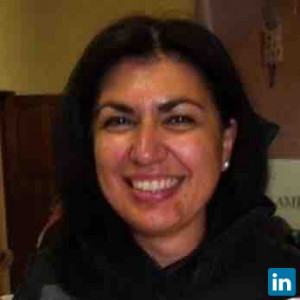Hi all,
I found this article very useful to follow to prepare the PEI interview.
Is there somebody that has already used this structure and can provide feedback, if it was successful or not?
----------------------------------------------------------------
At McKinsey, all your interviews will start with a Personal Experience Interview (PEI) question. This is a great opportunity to make a strong start and impress your interviewer.
You have probably already had CV interviews in the past and you will be able to use some of that experience. But PEI questions have some important particularities you should be aware of. We have put together a list of 8 preparation facts and tips to help you answer PEI questions and impress your interviewer.
1. Ten minutes
At many consulting firms, you will have a standalone 1h CV interview with a separate interviewer from your case interviews. McKinsey does things differently. Instead of concentrating the CV conversation in one session, the firm spreads it across multiple interviews.
At the beginning of each case interview, you will spend 10 minutes discussing some aspect of your CV with the interviewer. This strategy enables McKinsey to have several of its recruiters form an opinion on your personal experience. Overall, this helps the firm develop a more informed judgment on candidates’ personal abilities.
2. One single topic
Each of your personal experience interviews will cover a single topic. In other words, you will spend the full 10 minutes of the PEI discussing ONE particular skill McKinsey wants to test. For example, you might be asked how you demonstrated leadership in the past and you will discuss that topic with your interviewer for 10 minutes.
To be clear, you are not expected to give a 10 minute answer to the initial question your interviewers will ask. They will follow up with other questions as you tell your story to make sure they understand it in enough detail. The key point to understand is that these follow up questions will all be about the initial topic too.
3. Predictable questions
The good news is that the topics covered in PEI questions are predictable. In fact, more than 90% of PEI questions asked by McKinsey interviewers focus on 5 key themes.
We identified these 5 themes by analysing the full list of interview questions reported on Glassdoor.com for McKinsey. These themes are also consistent with the type of PEI questions the candidates who work with us are getting during their interviews.
Here are the main five themes:
1. Leading others (22%)
Tell me about a time you led a team through a difficult challenge
2. Managing a team conflict (22%)
Tell me about a time you worked in a team and had to manage a conflict
3. Managing a personal conflict (21%)
Tell me about a time you had a disagreement with a colleague / your boss
4. Influencing others (17%)
Tell me about a time you changed the mind of a group of people / an individual
5. Overcoming challenges (11%)
Tell me about a challenge you had to push yourself hard to overcome
6. Other (7%)
Notice that each of these questions relates to the “soft” skills consultants need to do their job effectively. They all relate to your ability to lead others, manage conflicts or disagreements, influence people and overcome challenges. Indeed, while the McKinsey PST and the case interviews are mainly assessing your “hard” analytical skills, the PEI is really gauging your “soft” people skills.
Finally, you should be aware that you will not always get the exact question we have listed above. Each interviewer will phrase the question slightly differently. But the point is that the themes on which the question will be are largely predictable.
4. People remember stories
Knowing what to expect in PEI questions is half the battle. The other half is preparing for those questions. When you interview with McKinsey, your interviewer will see another 6 or 7 candidates on the same day - it’s a long day for them. In this context, how can you set yourself apart and make a strong impression?
In our experience, the best way to do so is to answer PEI questions with a story. Notice that the way McKinsey phrases its questions (“Tell me about a time…”) is an invitation to tell a story. Our recommendation is therefore to start your preparation by writing down five stories; one for each of the skills McKinsey wants to test you on (leading others, managing a team conflict, managing a personal conflict, influencing others and overcoming challenges). During your interviews, you can then adapt these stories to the exact question your interviewer asks you. People remember stories. You should use that to your advantage.
There are different ways to tell your story but we suggest you keep it relatively simple. Here is an example of a structure you could use:
- Situation: start by giving the necessary context
- Problem: outline the problem you and your team were facing
- Solution: explain the solution you came up with to solve the problem outlined
- Impact: if possible, quantify the impact you had in solving the problem
- Lessons: conclude with any lessons you might have learned in the process
Once you’ve written down your five stories, rehearse telling them out loud. Getting into this habit will help you tremendously on the actual day of your interviews.
5. Mistake #1: too much time on context
There are three common mistakes candidates make when answering PEI questions.
First, a lot of candidates spend too much time setting the context. You should only give the minimum context needed to understand the problem and the solution in your story. Nothing more. A good test here is to make sure you don’t spend more than 30 seconds on this part of your story. Let me give you an example.
Too much context: “The example I am going to give you dates back to two years ago when I was in my third year of university. I was playing for the football team and we had just had a fantastic season. At the end of every season there is always a tournament to determine who is going to win the championship in the region where my university is. Not all universities get to go there, only the best ones do. The first few games we played went really well. Throughout the tournament, we managed to maintain our performance. Finally after 3 very tough games we managed to make it to the finals.”
Right amount of context: “Two years ago, I made it to the championship finals with my university football team. The story I am going to tell you relates to that final game which was the most important one in the season”
Notice how in the second example I went straight to the point and only gave the necessary information. A lot of candidates fail to do that in PEI questions which results in their interviewer asking them to speed up and go to the core of the story.
6. Mistake #2: not talking enough about YOU
Second, some candidates focus too much on what the team did to solve the problem in general, instead of giving the specifics of what they did. The PEI is about YOU. Your answer should therefore focus on how YOU demonstrated the skill your interviewer is looking for. A good test here is to make sure that you use “I” a lot. When you tell your story, if you hear yourself saying “I did this”, and “I felt that way” and “I suggested this”, you are very likely to be on the right track.
Using our football example above, your answer should focus on what YOUR contribution was in the final game. Maybe you were the best defender in the team, in which case you should detail the tactics you used to prevent the opposite team from scoring. Or maybe you were the captain in the team and had to talk individually to players to maintain a cohesive group. Whatever your role was, you should tell your interviewer about the specific things YOU did to secure the victory, not what the team did in general.
Again, a lot of candidates fail to do that, which leads their interviewer to ask them to talk about what THEY did and THEIR impact in general.
7. Mistake #3: being shy about your accomplishments
The same story can be told in multiple ways, some more impressive than others. This is not the time to be shy about your accomplishments. You should carefully think about your story and make it sound as positive as possible. To be clear, you should not brag about anything, but you should try to tell a story with which you are comfortable and that sheds a positive light on what you accomplished.
Let's use the football example again.
Negative spin, too much focus on the team: “By the end of the tournament, the dynamics in the team were not great as the games we had played had been really difficult. But we had a very good midfielder and in the end we won the competition. I only played the second half of the game because I'm a substitute and one of our defenders got injured.”
Positive spin, focus on you: “The competition was very stressful for the whole team but we managed to make it to the final. I took a major role in the second part of the final when I subbed in for one of our best players as a defender. Although I'm not used to playing in that position I managed to really step up and prevent my direct opponent from scoring. This made a big difference in the final outcome and contributed to us winning the championship”.
Notice how these two paragraphs could describe exactly the same situation. There is no contradictory information between them. But one of them focuses on you and is positive, while the other focuses too much on the team and is negative.
8. Great opportunity to make a difference
A lot of candidates underestimate the difficulty of personal experience interviews and end up not preparing very much for them. But as you should have realised by now, there are quite a few traps one can fall into when answering PEI questions. This is therefore an opportunity for you to make a difference in a very competitive environment. If you do as well as another candidate on case interviews but much better on your PEI questions, you will likely get an offer. So why not start preparing today!















